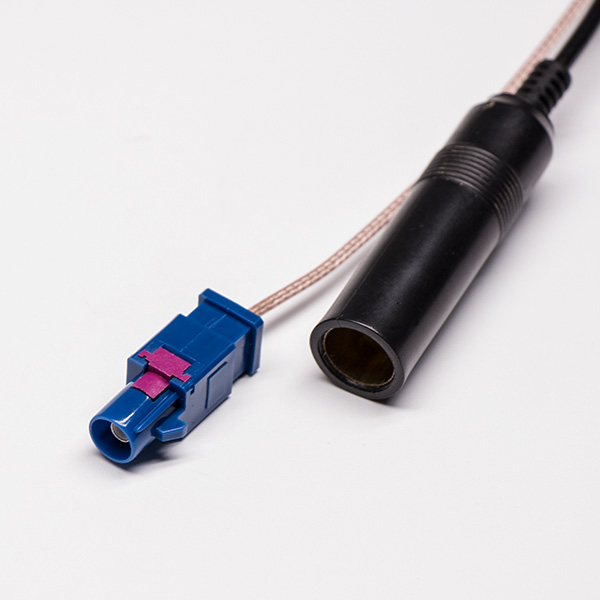How Do We Test the Mobile Phone Antenna in Real Life?
With the rapid development and application of mobile communications, China’s mobile phone industry has continued to grow and develop. Of course, China’s mobile phone users are also growing rapidly. In the mobile phone RF device, the mobile phone antenna is a passive device, and the mobile phone antenna is the only “tailor-made” device on the mobile phone. Its particularity and importance necessarily require that the R&D process has strict requirements on the antenna performance test. In order to ensure the normal use of the phone. Now let’s briefly introduce several common mobile phone antenna test methods in the development of mobile phone antennas:

1. Microwave darkroom (Anechonic chamber)
The darkroom is also called the non-reflective chamber, and the absorbing darkroom is called the darkroom. The microwave darkroom is composed of electromagnetic shielding room, filtering and isolation, grounding device, ventilation waveguide, indoor power distribution system, monitoring system, and absorbing material. It is a shielded room with a absorbing material as a lining, which absorbs most of the simulated space free conditions of most of the electromagnetic energy incident on the six walls. The darkroom is a test equipment that antenna design companies need to build, because the test of the mobile phone antenna is more accurate and relatively systematic, and its test indicators can be used to measure the performance of a mobile phone antenna. It is mainly used by antenna companies, but it is expensive.
2, TEM CELL test
TEM CELL is used to test the antenna active index. Because the microwave darkroom and antenna test system are expensive, generally more than one million. The general mobile phone design and development company does not have such equipment, but instead uses TEM CELL (also smaller than the triangular cone). test. Like the purpose of the microwave darkroom test, TEM CELL is also an antenna test environment that simulates an ideal space. The metal box can provide enough shielding function to eliminate the influence of external interference on the antenna, and the internal absorbing material can also absorb the incident wave. Small reflected waves. TEM CELL cannot passively test the antenna and can only test the active indicators. Due to space constraints, TEM CELL’s absorbing materials are relatively thin, while for snaking absorbing materials, the incident waves are absorbed by multiple reflections between the tips, so the absorbing materials in the microwave darkroom are thicker. TEM CELL’s absorbing materials are not purchased thick, so the absorption of incident waves is not sufficient, which will lead to inaccurate test results.
In addition, the height of TEM CELL is not enough, which is one reason why TEM CELL can not be quantitatively tested. According to the far field test analysis of the antenna radiation, for the mobile phone antenna of the EGSM/DCS band, the distance between the measured mobile phone and the antenna is at least greater than 1 meter; therefore, we can see that almost all 2D darkrooms are much larger than this distance. TEM CELL is smaller than this distance, so this is one reason why TEM CELL is not accurate relative to the microwave darkroom.
Therefore, TEM CELL can only perform qualitative analysis on the antenna and cannot do quantitative analysis. In the laboratory, the difference between several prototypes can be qualitatively analyzed, and the performance of the prototype can be compared, but the performance of the antenna cannot be measured as an accurate standard value. It can only be judged by comparison with other Golden samples. Cell phone antenna performance. TEM CELL generally only finds the best value, so that the test results are sensitive to the location of the phone.
In addition, there is a test tool that is more shielded than a shielded box, and some design companies use it to actively test the antenna of the mobile phone. This method is not feasible. On the one hand, because the test distance is too close, on the other hand, because there is not enough absorbing material, the external interference has a relatively large impact on the antenna test, which makes the test result sensitive to the position. A slight change in the position test result will have a big change. Therefore, this test method does not have much reference significance for the performance of the mobile phone antenna.
3. Test antenna performance with a coupled test board
In order to ensure the production quality of the products in the production process, the coupling test of the antennas is often performed. The test device to be used is that the coupling test fixture is connected to the integrated tester, and the mobile phone is fixed on the fixture. In the early stage of production, according to the test results of several prototypes, a reasonable coupling compensation value is given, a power standard is determined, and then the maximum power of the mobile phone is tested. Above this power standard, the product meets the production requirements, which is lower than this requirement. There is a problem with the antenna and related devices. The following problems can be found through the antenna coupling test:
(1) Antenna matching circuit for soldering and missing parts.
(2) There is a problem with the electronics/structures around the antenna.
(3) The antenna is not assembled.
(4) There is a problem with the quality of the antenna itself.
It should be noted that the antenna coupling test is a conformance test of the product and is not a test of product performance. The antenna indicators mentioned above are all tests for the far field. The antenna coupling test is for the near field test. The antenna of the tested mobile phone is very close to the antenna of the coupling fixture. The near field is the objective existence of the antenna itself. Once the structure and antenna of the whole mobile phone are determined, the near field can be determined. Therefore, whether the antenna part has a problem can be judged according to whether the test result is within a certain range. The antenna coupling test only tests the maximum power of the antenna, and does not test other items. Even if it is tested, it does not make sense.
It is very wrong to use the antenna coupling test to verify the performance of the antenna and perform performance judgment based on the test results of different mobile phones. At present, I still encounter many domestic mobile phone companies. The coupling test is used to judge the performance of the antenna, so that the antenna company has to pass the coupling test standard by adjusting the resonance frequency.
In terms of the design of the mobile phone antenna, the antenna test is a very important link. Without accurate design, there is nothing to measure the good or bad of the antenna design. Therefore, it is very important to choose a good test system for the development of the mobile phone antenna.

Huangjie Communication’s gsm antenna, wifi antenna, uhf antenna, vhf antenna, TV antenna and electronic connector production line introduce high-end production equipment from Japan and Taiwan to ensure stable and excellent quality. The company’s production equipment includes injection molding equipment, metal stamping equipment, automatic assembly equipment, mold manufacturing equipment, RF stripping equipment and quality inspection equipment. We have high-end technology research and development and manufacturing capabilities, can customize products according to customer needs, and adjust and improve production efficiency. Guaranteed stable, accurate delivery and fast sample confirmation.
From:http://www.hj-antenna.com/test-mobile-phone-antenna-real-life/



Leave a Reply
Want to join the discussion?Feel free to contribute!